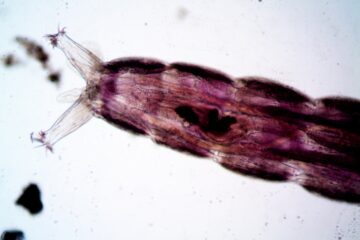![]()
Introduction
Forensic evidence is based on science. Some scientific approaches have been around for a long time and easily pass legal scrutiny. More recent procedures may not have had the time for extensive review and scientific debate. In general, cutting-edge procedures will be employed more frequently in research laboratories. However, if a forensic examination is being considered, the Frye standard could become highly essential.
The Frye Forensic Standard or Frye test is a general acceptance test used by the United States legal system to determine the admissibility of scientific evidence in court. It states that expert opinion based on a scientific approach is only admissible if the technique is widely recognised as reliable in the relevant scientific community. The United States Supreme Court ruled in Daubert v. Merrell Dow Pharmaceuticals, 509 U.S. 579 (1993), that the Federal Rules of Testimony supplanted Frye as the standard for expert evidence acceptance in federal courts. However, the Frye standard is still followed in several jurisdictions. This threshold is derived from the decision of Frye v. United States, 293 F. 1013 (D.C. Cir. 1923), which addressed the admissibility of the systolic blood pressure deception test as evidence. According to the Court’s decision in Frye, expert testimony must be based on scientific procedures that are adequately established and accepted. “Essentially, to apply the Frye Standard, a court has to decide if the procedure, technique or principles in question were generally accepted by a meaningful proportion of the relevant scientific community”[1] The Frye standard was in use for many years in the federal courts and some US states.
The Frye test has been substituted by the Daubert standard in many, but not all, jurisdictions. California, Illinois, Minnesota, New Jersey, New York, Pennsylvania, and Washington are still Frye supporters. The Florida Supreme Court adopted the Daubert standard on May 23, 2019. Kansas adopted Daubert on July 1, 2014, and no longer follows the Frye standard. On August 28, 2020, the Maryland Court of Appeals adopted the Daubert standard in Rochkind v. Stevenson.
To pass the Frye test, the court must interpret scientific data given to it as “commonly accepted” by a meaningful segment of the associated scientific community. This applies to procedures, principles, or strategies that may be presented during a court case’s proceedings. In practise, proponents of a highly debated scientific problem were required to provide a number of specialists to speak to the legitimacy of the science behind the subject in question.
Frye v. United States 293 F. 1013 (D.C. Cir. 1923)
The Frye test was born out of the case of Frye v. United States that occurred in 1923. In this case, Mr. Frye (Appellant) was convicted of second-degree murder after the lower court barred him from admitting testimonial evidence about the findings of a deception test, he took after the crime. The facts of the case are as follows:
The appellant was prosecuted and tried for murder. Appellant attempted to call an expert witness at his trial to testify that he had taken a systolic blood pressure deception test, as well as the results of the exam. The lower court ruled that the expert testimony was inadmissible, and Appellant was convicted of second-degree murder.
On November 25, 1920, over a year after John Larson joined the Berkeley Police Department and a few months before he read William Marston’s article on lie detection, a young black man called James Frye shot and killed a wealthy black surgeon in Washington, D.C. Dr. Robert W. Brown was slain in his office around 8:45 p.m. Another physician in the office witnessed the shooting. Frye bolted from the office, followed by the eyewitness. The chase ended quickly, though, when Frye fired a couple of rounds at his pursuer. The police had no notion who had done the crime because the witness didn’t know Frye.
The issue involved with the case was if expert testimony regarding the results of a test (such as a systolic blood pressure deception test) is inadmissible when the test has not received scientific recognition from psychological and physiological authorities. The answer to this question as per the higher court was that “the test results Appellant attempted to introduce into evidence did not meet the requirement that such evidence be ‘sufficiently established to have gained general acceptance in the particular field in which it belongs,’ and therefore the test results were properly excluded by the lower court.”[2] The court wrote that: “Just when a scientific principle or discovery crosses the line between the experimental and demonstrable stages is difficult to define. Somewhere in this twilight zone the evidential force of the principle must be recognized, and while the courts will go a long way in admitting expert testimony deduced from a well-recognized scientific principle or discovery, the thing from which the deduction is made must be sufficiently established to have gained general acceptance in the particular field in which it belongs.”[3]
A Hearing under Frye Test
When an opposing party challenges the admissibility of expert testimony in a Frye jurisdiction, it is vital to understand that the analysis is far more constrained than in a Daubert hearing. That is, the only question for the court is whether the expert’s approaches are generally acknowledged as reliable within their scientific community. A Frye hearing is likewise far more limited in that it only pertains to new scientific findings. A hearing may be avoided if judicial precedent indicates that certain scientific approaches were previously acknowledged as credible across the society because a Frye inquiry focuses on one criteria – widespread acceptability.[4]
A Frye hearing is held by a trial court to determine whether the expert’s methodologies are generally accepted by the scientific community. Issues such as whether the expert’s opinions are reliable or relevant are unrelated to such an investigation. Given the special focus of the Frye general acceptance test, it is critical to tailor one’s expert testimony to this factor. If it can be demonstrated that an expert’s opinion is widely recognised within its own scientific community, the testimony will be more likely to survive any challenges.
Shortcomings
“Frye’s decision failed to explain the meaning of general acceptance and hence different courts interpreted it as per their understanding. The Frye’s decision was widely applicable in the court in spite of a lot of criticism from various community.”[5] Despite Rule 702, the Frye standard gained traction, as did its detractors. Some reviewers thought Frye was too imprecise, assuming wrongly that the scientific community would always test new scientific approaches before using them. In the midst of these criticisms, the Daubert standard developed.
According to this criteria, expert opinion is only admissible in court if the technique employed to obtain any particular conclusion is acknowledged as reliable by the larger scientific community. Because the larger community accepts the testing procedure in question, this requirement accidentally secures the weigh-in of numerous scientists at the same time. The Frye Standard is especially beneficial in court instances involving individuals facing alcohol or drug-related accusations. The Breathalyzer test, for example, is frequently utilised as evidence when law enforcement authorities decide to arrest drivers for exceeding the legal alcohol limit.
Moreover, forensic toxicologists have repeatedly indicated that this test is flawed and have primarily advocated for this type of testing to be banned. As a result, a forensic toxicologist expert witness would be extremely beneficial to clients who are involved in an alcohol or drug-related case.
While Frye concentrates on a single criterion – whether the expert’s judgement is widely recognised by the relevant scientific community – Daubert provides a variety of factors to evaluate. Daubert encourages trial judges to assess admissibility by establishing their role as “gatekeepers,” whereas Frye focuses on the expert’s own scientific community.
Conclusion
The standard gained popularity in the 1970s, initially in criminal cases, and then in civil matters such as toxic torts. It eventually became, albeit in a broad sense, the prevailing criterion of expert admissibility.
Modern molecular technologies that sequence deoxyribonucleic acid (DNA) and identify an individual’s DNA profile can withstand the legal examination of the Frye standard. Typically, following stated and agreed standards for sample collection, handling, and analysis is sufficient to secure the legal admissibility of the evidence. The Frye standard also applies to testimony given by someone judged to be an expert in a field relevant to the case (i.e., a ballistics expert). If the evidence is not presented convincingly (including citing scholarly literature on the methodology, use of the procedure, limitations of the procedure, and general acceptance in the scientific community), the evidence may be declared inadmissible.
Expert witnesses are crucial assets in any court case. They offer insight, can corroborate testimonies with scientific evidence, and support or oppose cases based on this evidence and their extensive experience. Because expert testimony can carry a lot of weight in a court of law, it’s logical that restrictions on expert testimony in court have been put in place.
References:
[1] URL https://www.forensicsciencesimplified.org/legal/frye.html
[2] URL https://www.casebriefs.com/blog/law/evidence/evidence-keyed-to-fisher/lay-opinions-and-expert-testimony/frye-v-u-s/.
[3] Frye v. United States, 293 F. 1013 (D.C. Cir. 1923).
[4] People v. LeGrand, 8 N.Y.3d 449, 458 (2007) (“A court need not hold a Frye hearing where it can rely upon previous rulings in other court proceedings as an aid in determining the admissibility of the proffered testimony.”).
[5] Sambeeta Dabral, “Forensic Evidence in Criminal Justice System in the Light of Daubert Standards”, INDIAN POLITICS & LAW REVIEW JOURNAL ISSN 2581 7086 [VOLUME 3] DECEMBER 2018.



0 Comments